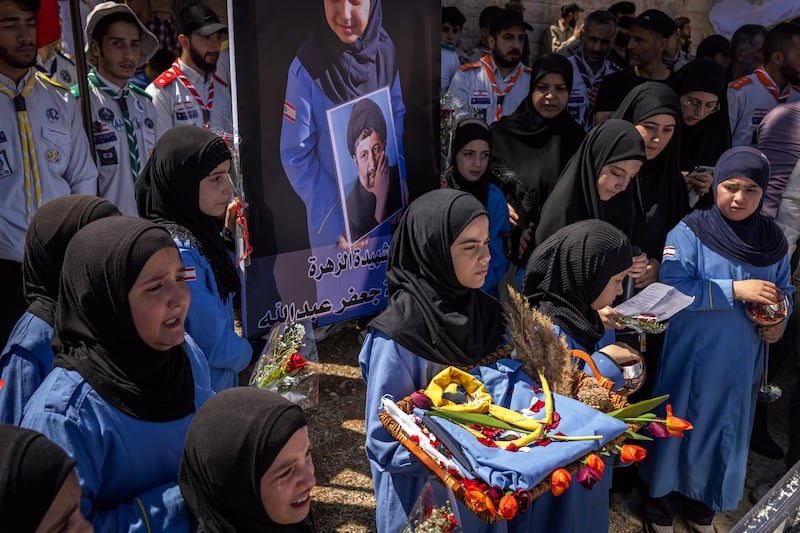At least 14 people have been reported killed and hundreds injured in a second series of explosions across Lebanon targeting members of the militant Hizbullah group.
Wednesday’s attacks targeted walkie-talkies being carried by members of the Iran-backed militia and political party. There were fewer attacks than the previous day, when at least 12 people – including two children – were killed in a series of explosions targeting pagers.
More explosives, however, were used in the walkie-talkies, resulting in more powerful blasts. Some of them occurred in crowds of mourners attending funerals of those killed on Tuesday.
Lebanon’s health ministry said 14 people had been killed and 450 injured on Wednesday, while nearly 3,000 were injured on Tuesday, as well as the 12 who died.
RM Block
A Reuters reporter in the southern suburbs of Beirut said he saw Hizbullah members frantically taking batteries out of any walkie-talkies on them that had not exploded, tossing the parts in metal barrels.
Once again, the vulnerability of Hizbullah’s entire military communications network has been exposed and, for the time being at least, the group has no safe way of making contact with thousands of its key operatives.
A senior Israeli official said Hizbullah leader Hassan Nasrallah could stop a descent to all-out war. “The one who can stop the escalation is Nasrallah if he announces that he is willing to accept the US framework [to end the cross-border fighting between Israel and Hizbullah in Lebanon],” the official said. “If not, we are willing to go all the way.”
Some 63,000 Israelis were evacuated from their homes close to the Lebanese border at the start of the Gaza war, almost a year ago, in response to Hizbullah cross-border rocket fire from Lebanon. Earlier this week, Israel’s government made their return a core war goal, raising the prospect of all-out war with the Shia militant group.
Israeli prime minister Binyamin Netanyahu said on Wednesday that Israel would return to their homes residents in the north who have had to flee the fighting..
Defence minister Yoav Gallant said Israel’s focus had moved to the northern front as a “new phase” of the war was beginning.
“The centre of gravity is moving north. We are diverting forces, resources, and energy toward the north,” he said in comments at an air force base. “I believe that we are at the onset of a new phase in this war, and we need to adapt.”
The Israeli army’s top general, Lt Gen Herzl Halevi, warned on Wednesday night that Israel has additional capabilities. “Certainly, the next two stages are already ready to move forward, at each stage the price for Hizbullah should be high,” he said.

It remains to be seen how Hizbullah will respond to the wave of explosions, and the Israel Defense Forces (IDF) was on a heightened state of alert.It movedits 98th division, which been fighting until recently in the Gaza Strip, to the northern border following the cabinet’s decision to focus the military effort in the north.
The division, which includes the paratroopers and the commando brigades, will join the 36th division, which has already been deployed in northern Israel for several months.
In addition, soldiers in specific units have been drafted to the north, including air defence, home front command and medical corps personnel.
The head of the IDF’s northern command, Maj Gen Uri Gordin, said the army “is determined to change the security situation as soon as possible. The commanders and the forces are completely committed – at peak preparedness for any task they will be required to do”.
Two IDF brigades this week completed exercises simulating scenarios involving manoeuvring in enemy territory and evacuating wounded from the battlefield under fire.
Cross-border fire continued on Wednesday but without a significant escalation. In addition, a drone launched from Iraq towards northern Israel was shot down by Israeli jets after sirens sounded in Tiberius and in the area of the Sea of Galilee.
– Additional reporting: Reuters
- Join The Irish Times on WhatsApp and stay up to date
- Listen to our Inside Politics podcast for the best political chat and analysis



















